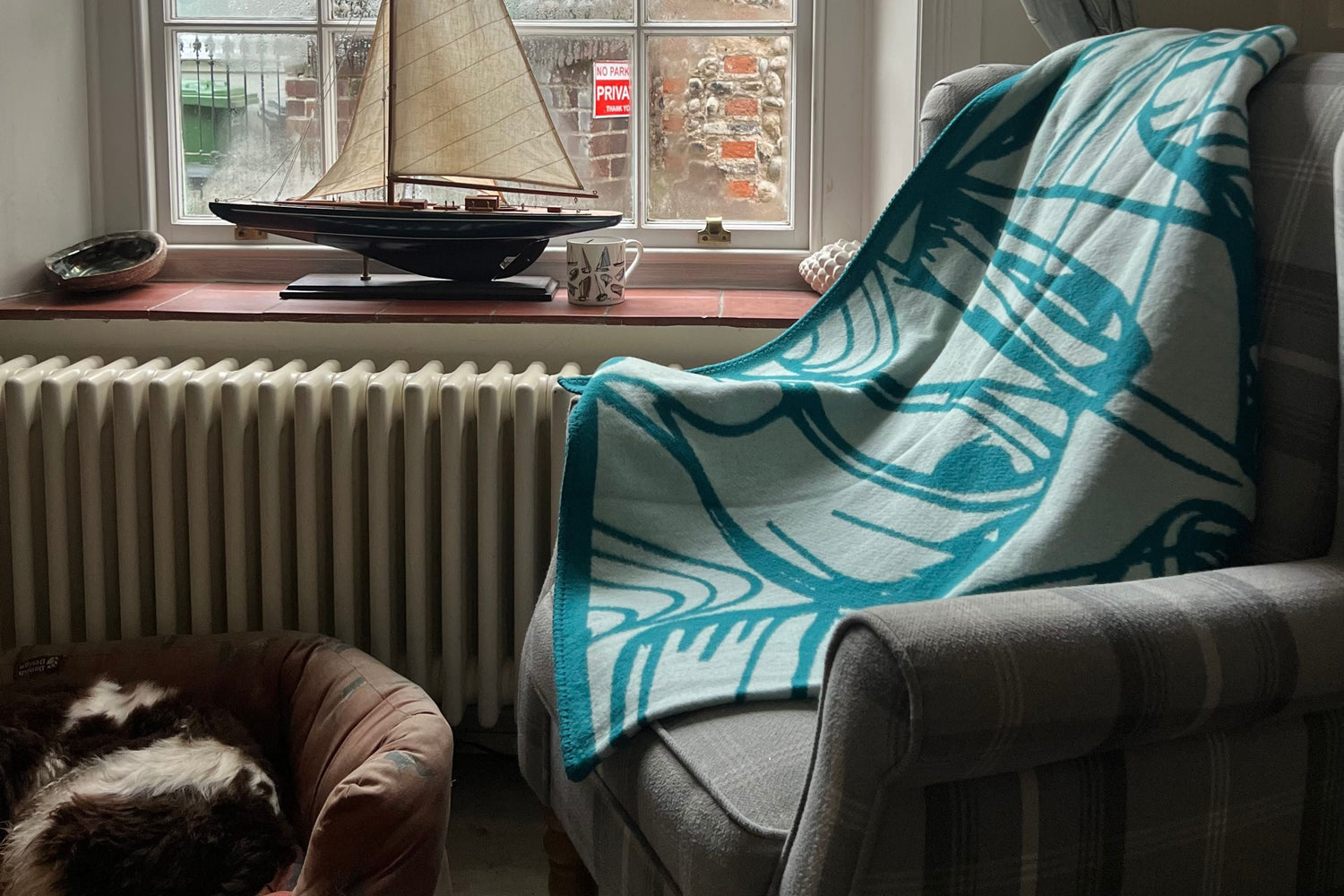Your Guide to Cold Water Swimming: Tips for a Safe and Refreshing Dip
Did you know that swimming in cold water can increase your white blood cells by up to 250%? This amazing effect is why over 7.5 million Britons swim in cold water every year. The number has been growing steadily, starting from 2018.
Along the Norfolk coast, we love swimming in the cold North Sea. It's a way to connect with nature and find our inner strength. Taking a dip in the sea is refreshing and invigorating.
Swimming in cold water is exciting because it challenges us and refreshes our minds. It also brings people together. Whether it's in Scandinavia's icy lakes or Norfolk's shores, swimmers meet all year round.
This guide will teach you how to enjoy cold water swimming safely. It's perfect for both experienced swimmers and newcomers. We'll share tips to help you swim confidently along the coast.
Key Takeaways
- Always acclimatise gradually to prevent cold shock response
- Proper equipment including a bright swim cap and tow float enhances safety
- Regular practice can improve circulation and boost immune function
- Swimming with companions provides both safety and community connection
- Post-swim warming routines are essential for recovery and enjoyment
- Respect tidal patterns and local conditions before entering unfamiliar waters
The Invigorating Benefits of Cold Water Swimming
Cold water swimming is a game-changer for your body and mind. Living by the coast in Norfolk, we've seen how it boosts wellbeing. When you dive into the cold sea, a journey starts that changes your health and mood.
The shock of cold water wakes up your body. Your heart beats faster, blood flows better, and your body reacts in many good ways. It's not just a workout; it's a way to connect with nature and improve your health.
Physical and Mental Health Advantages
Swimming in cold water does more than just feel good. It makes your blood flow better all over your body. This brings warmth to your skin and gets your cells working.
It also makes your heart stronger, like exercise but better. The cold makes your heart work harder, which can make it healthier. Your heart rate gets better with each swim.
It also boosts your immune system. Studies show that cold water swimming can help fight off. The cold stress makes your body stronger against sickness.
- Enhanced circulation and blood flow to vital organs
- Reduced inflammation and possible pain relief
- Improved temperature regulation and adaptation
- Strengthened immune response to common illnesses
- Increased metabolic efficiency and energy levels
The mental benefits are just as great. The feeling of joy you get from swimming is real. Cold water releases endorphins, which are your body's natural mood boosters. This can help with stress and depression.
Swimming in cold water makes you focus on the moment. The cold water clears your mind, making you feel calm. It's like a meditation that works better than usual ways to relax.
Many people say swimming in cold water helps them stay calm. The mix of nature, challenge, and body response is a great way to deal with stress.
Preparing Your Mind and Body
Before you swim in cold water, get ready safely and enjoyably. Start with a positive mindset, ready for the challenge but looking forward to the benefits. Imagine how good you'll feel after.
Do some gentle stretching to get your muscles ready for the cold. Pay extra attention to your neck, shoulders, and back. A little warm-up before swimming can also help.
Learning to breathe deeply is key. Practice this before you swim to handle the shock of cold water. When you first feel the cold, you might gasp. Being ready for this helps you stay in control.
Creating a special ritual before swimming makes it more meaningful. This helps them connect with their intentions.
Remember, your body temperature will drop when you swim in cold water. Start with a warm body to protect against getting too cold. A light warm-up can make the swim more comfortable without losing the cold benefits.
With the right preparation and understanding of its benefits, cold water swimming is more than a hobby. It's a way to improve your life, connect with your body and mind, and enjoy nature.
Essential Tips for Cold Water Swimming
Selecting the Right Gear
The right gear makes all the difference when swimming in cold waters. Many cold water swimmers embrace the natural feel by wearing only a swimsuit, a bright swim cap, and neoprene gloves or booties for extra warmth.
A bright cap keeps your head warmer and makes you more visible in the water, while gloves and booties protect your extremities where heat loss happens fastest.
If you're new to cold water swimming or planning longer swims in colder months, a wetsuit (3-5mm thickness) can help ease you into the experience. A wetsuit traps a thin layer of water against your skin, which your body heats up, offering extra protection from the chill.
Acclimatisation Techniques
Getting used to cold water is key. Our bodies adapt to cold, but it takes time. Start in warmer months to gradually adjust.
Begin with short swims of 2-3 minutes and gradually increase the time. Consistency is more important than the length of your swims. Regular short swims build cold tolerance better than occasional long ones.
The "4-3-2-1" method is a good way to acclimatise. Start with knee-depth water, then waist, shoulder, and fully immerse. This helps manage the shock of cold water.
Safe Entry and Swimming Practices
Safety is always first in our swimming community. Always enter the water slowly. This avoids the danger of gasping underwater and inhaling water.
Check the water conditions before swimming. Look out for rip currents, hazards, and water quality. Swimming parallel to the shore and wearing a bright tow float increases your visibility.
Never swim alone. Swimming with others is safer and more enjoyable. Having someone watch for hypothermia signs is vital.
Set a time limit before swimming and stick to it. Cold water can cloud your judgment. Use a timer or waterproof watch to remind you when it's time to get out.
Norfolk's Best Cold Water Swimming Spots
Norfolk has magical swimming spots. Each has its own charm and safety considerations for swimmers.
Blakeney's channels are perfect for beginners. The tidal waters warm up quickly, and the harbour offers protection from currents.
Holkham's sandy beach is ideal for building confidence in open water. The pine forests provide a warm-up spot after swimming.
Wells-next-the-Sea is great for families. It has beautiful surroundings and amenities nearby. The beach huts add to the British seaside feel.
Joining the local swimming community enhances your experience. Local knowledge and shared hot drinks and conversations create lasting connections.
After the Swim: Recovery and Embracing Coastal Living
The moments after an open water swimming session are truly magical. Your body feels alive with achievement. Your mind is clear, thanks to facing the elements.
Recovery begins as soon as you get out of the water. Dry off fast and put on warm clothes. Our soft cotton sweatshirts are made for these moments. A hot drink warms you from inside out, helping your body recover.
Many winter swimmers bring tea with honey in a thermos. It's perfect for restoring energy while your body warms up.
The social side of cold water swimming builds strong bonds. From Portsmouth to Norfolk, swimmers meet to share their stories. Unlike solo sports like mountaineering, cold water swimming brings people together.
We invite you to visit our boutique shop, Creek Lifestyle, at Maritime Yard in Blakeney. Share your swimming stories and explore our coastal-inspired collections. Contact us at hello@creeklifestyle.co.uk or 01263 802277 to learn more about our coastal lifestyle
FAQ
What are the main health benefits of cold water swimming?
Cold water swimming boosts your circulation and immunity. It also reduces inflammation and helps with pain. Regular swims strengthen your heart and cardiovascular system.It also releases endorphins, giving you a natural high. This can help with depression and anxiety. Plus, it promotes mindfulness and clears your mind.
How should I prepare for my first cold water swim?
Start with a calm mindset, ready for the challenge. Do some gentle stretching to prepare your muscles. Practice controlled breathing to handle the cold shock.Develop a pre-swim ritual and check the water conditions. Never swim alone. Start with short swims in warmer months and gradually get longer.
How do I safely acclimatise to cold water?
Acclimatisation takes time. Start in warmer months and gradually get used to colder water. Begin with short swims and increase time as you get used to it.Regular short swims are better than long ones. The cold shock response gets less intense with practice and proper technique.
What safety precautions should I take when cold water swimming?
Always swim with a buddy or join a group. Enter the water slowly to adjust. Check the water conditions before swimming, watching for rip currents and hazards.Swim parallel to the shore and use a bright tow float for visibility. Know your limits and get out if you start shivering.





